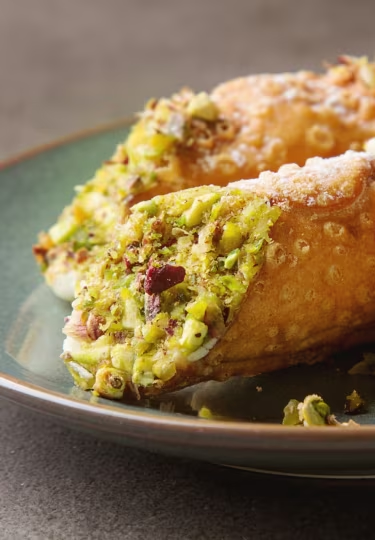While Italian cuisine is endlessly variable, Sicilian food offers even more of a twist thanks to its African and Arabic influences.
In the country’s western cities, couscous restaurants cozy up beside pizza places in marble-paved streets. Wandering Palermo’s history-rich centro storico, you’ll come across street food with a link to the ancient Greeks.
Sicilian food also draws heavily on the bounty of the Mediterranean Sea as well as the island’s fertile interior. Choose between chunks of fresh swordfish or fried eggplant in your bowl of Sicilian busiate pasta.
Read on for our ultimate guide to Sicilian cuisine.
Arancini
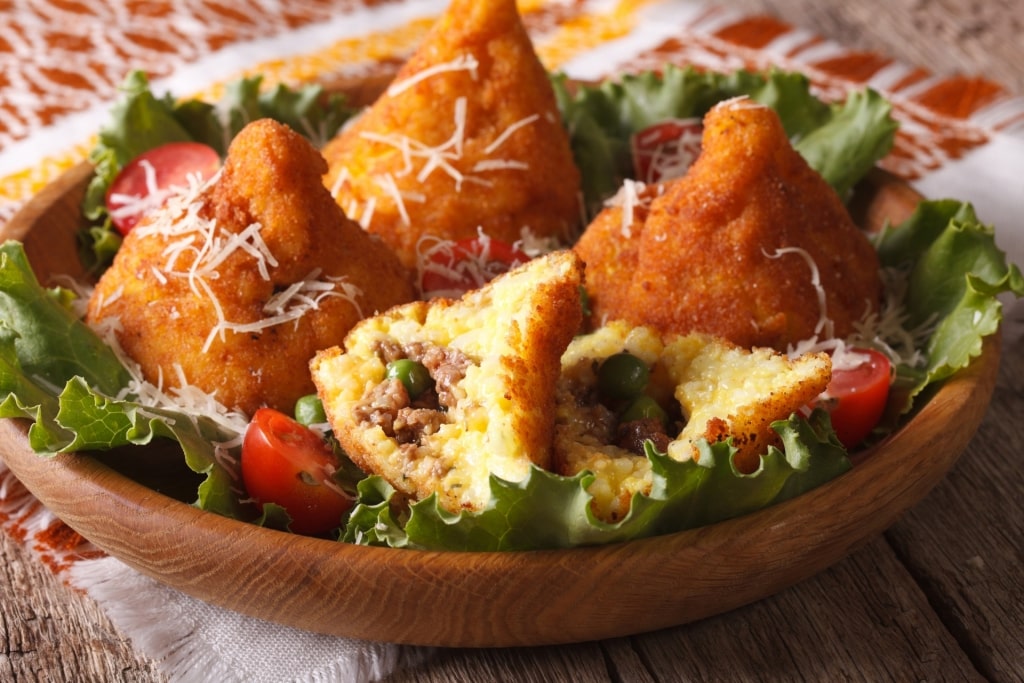
Arancini
These deep-fried balls of gooey cheese and rice are one of the best-known examples of Sicilian food.
Named for “arancia”, or the oranges they resemble in size and color, they’re a mix of short-grain rice, herby tomato sauce, and melted cheese (often a blend of Parmigiano Reggiano and mozzarella).
This beloved street food dates back to the arrival of the Arabs in the 10th century. Its frugal origin story relates how arancini were a way of using leftover rice, the rest of the recipe was improvised from the staples of the classic Mediterranean kitchen.
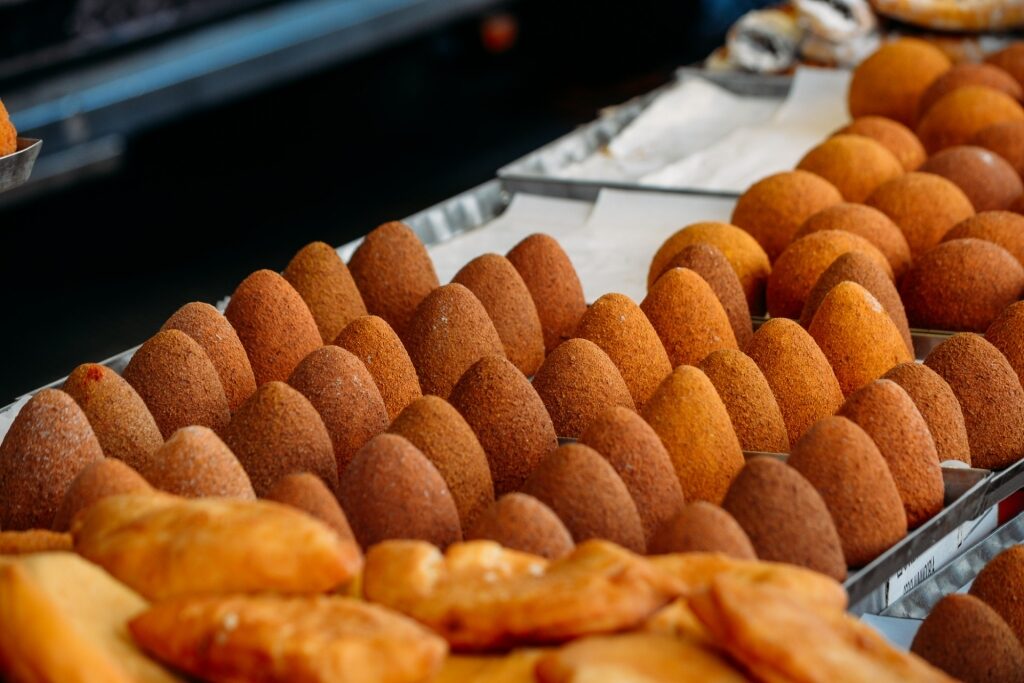
Arancini
You can get them in small versions as tasty appetizers, and there’s a pointed version that hails from the beautiful Italian coastal town of Catania.
If there’s a kitchen in Palermo—one of the best food cities in Italy—that’s been making arancini continuously since the 10th century, it’s yet to come forward. However the Antica Focacceria San Francesco can lay claim to having arancini on the menu for nearly two centuries, and it’s still baking up a storm.
Sfinciuni
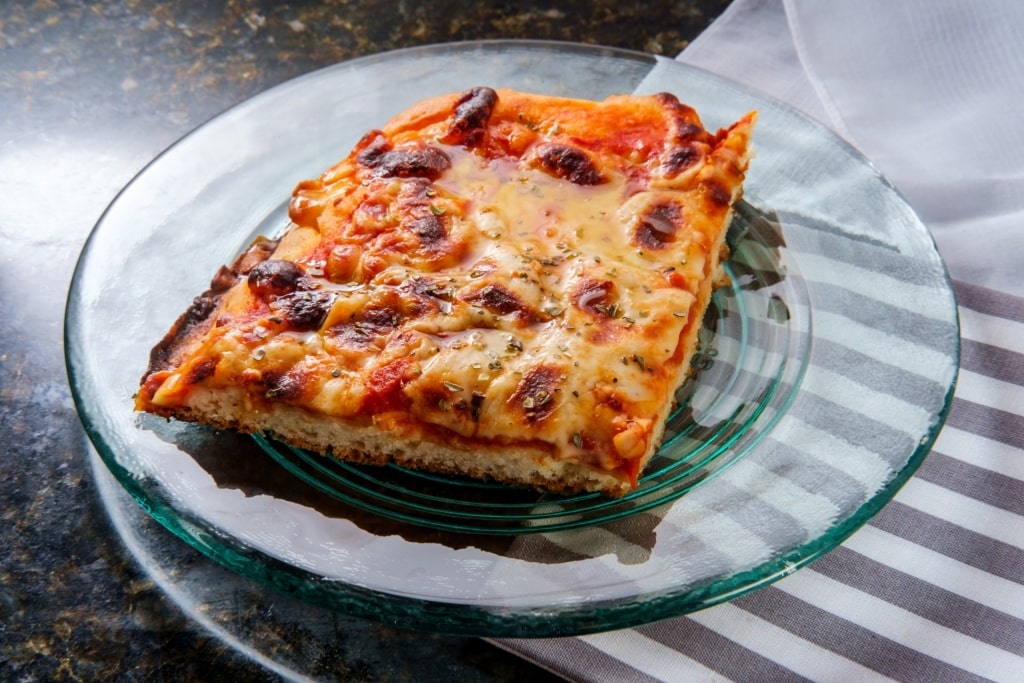
Sfinciuni
Another favorite from the Palermitan pantry, sfinciuni is the Sicilian take on pizza. Perhaps even older than arancini, sfinciuni was developed from the flatbread of the ancient Greeks who first arrived on this island in the late 8th century AD.
Typically baked in a wood-fired oven, a modern sfinciuni has left its flatbread predecessors behind and evolved into a more athletic cousin of the Chicago pizza pie.
Due to its shape and texture, it’s commonly believed that its name derives from the Latin for “sponge”.
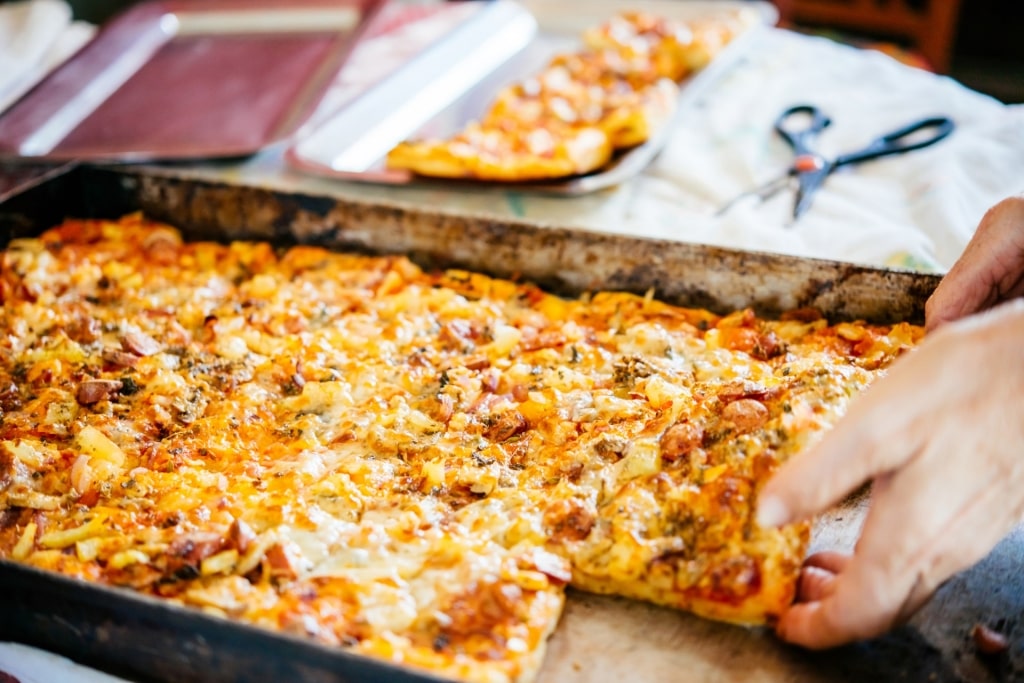
Sfinciuni
It’s thick yet fluffy, chewy yet crisp, and if you buy it at a street stall such as on Palermo’s pedestrianized Via Maqueda, your sfinciuni arrives as a rectangular slice with tangy sauce, oregano, and a hint of cheese.
Restaurant sfinciuni will be more elaborate, and you’ll find it’s garnished with typical Sicilian toppings such as bread crumbs, anchovies, onions, capers, oregano, and melted caciocavallo cheese.
Read: Best Things to Do in Palermo
Caponata
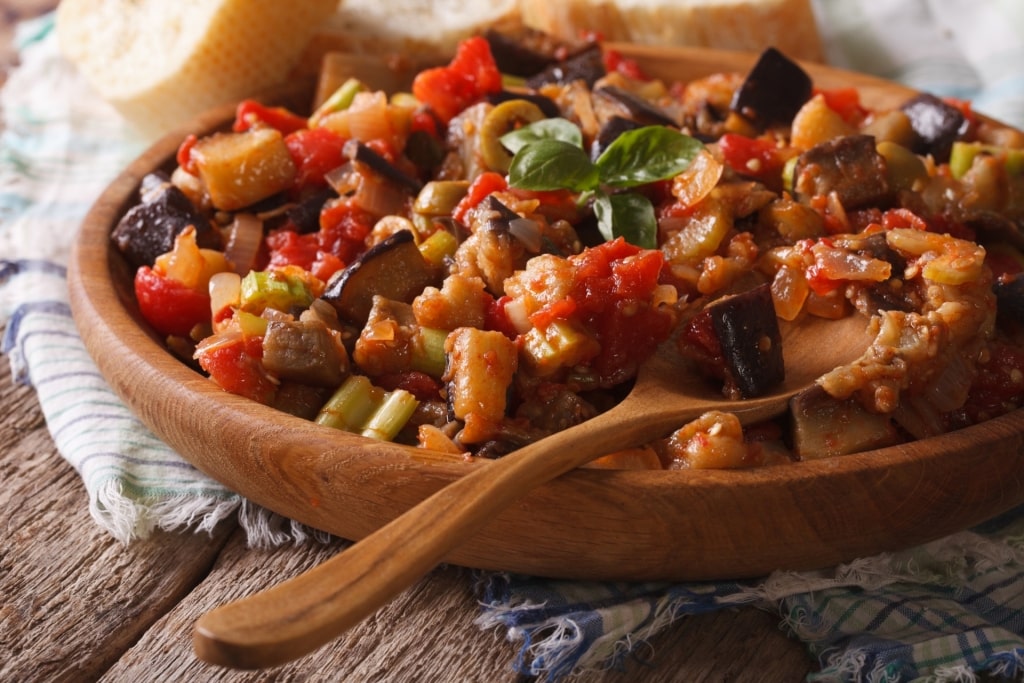
Caponata
Making use of one of Sicilian food’s keystone ingredients, caponata takes the island’s beloved eggplant and sautees it with a mixture of chopped tomatoes, onions, celery, capers, and olives.
A distinctive sweet and sour kick is then added to this already flavorsome mix with the addition of sugar and vinegar.
The dish is impressively adaptable and comes as a main or a stunning side. As with many uber-popular dishes in Italy, caponata has been subject to endless experimentation.
In Campania, you’ll find your caponata filled out with potatoes and zucchini, the eggplant heretically removed and replaced by bell pepper.
Pasta alla Norma
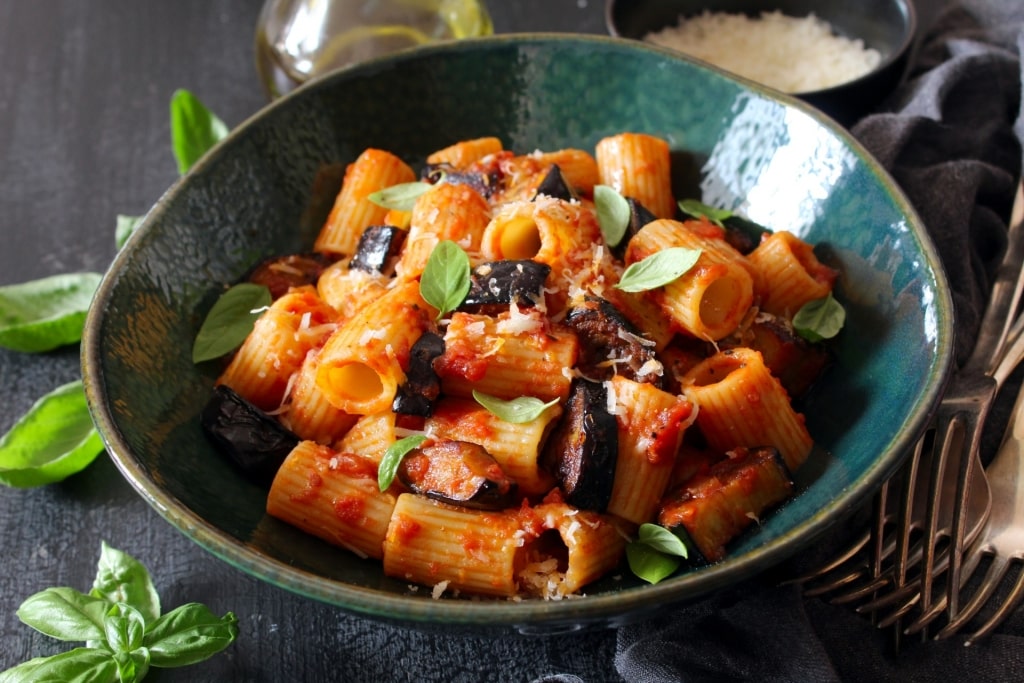
Pasta alla Norma
A classic from the Sicilian town of Catania, pasta alla Norma is a pasta dish that balances its rich, garlicky tomato sauce with sweet caramelized eggplant, salty ricotta, and fragrant fresh basil.
Its name doesn’t derive from some mythical Sicilian grandmother as you might likely believe, but from a tasting of the dish that took place in the mid-20th century.
A Catanian chef, Nino Martoglio, tasted pasta alla Norma and exclaimed, in a culinary “eureka” moment, that it, “is a real Norma!”.
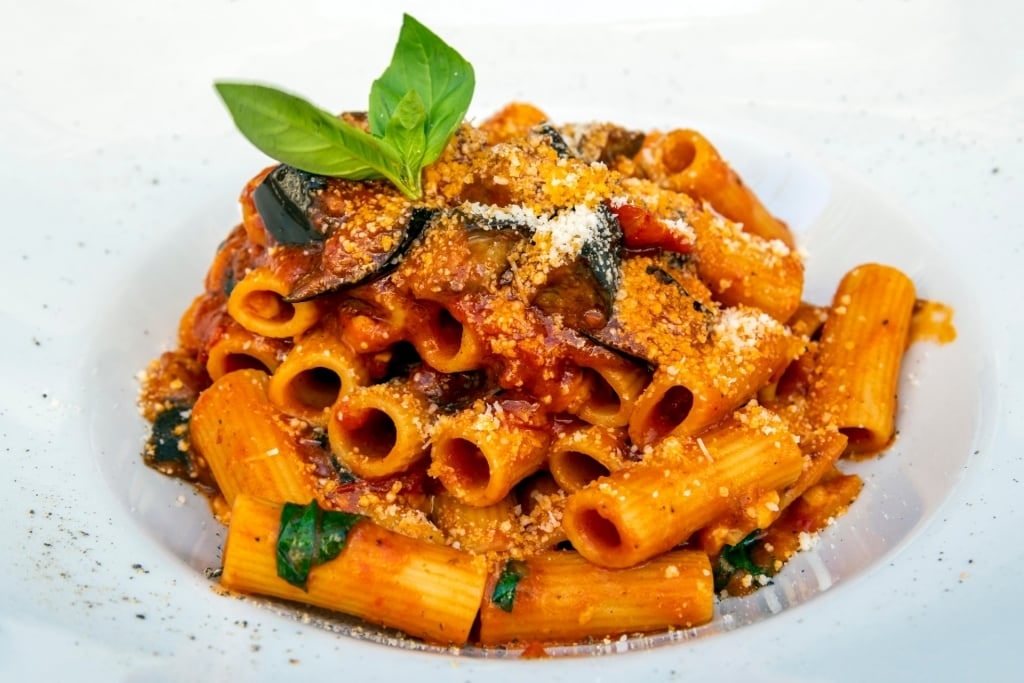
Pasta alla Norma
The Norma references Bellini’s eponymous opera and its chief theme of cultural identity. For Sicilians, pasta alla Norma is a pretty profound plateful incorporating a number of their keystone flavors and ingredients.
Make a reservation at Trattoria da Antonio in Catania for an authentic “Norma” experience.
Pasta con le Sarde
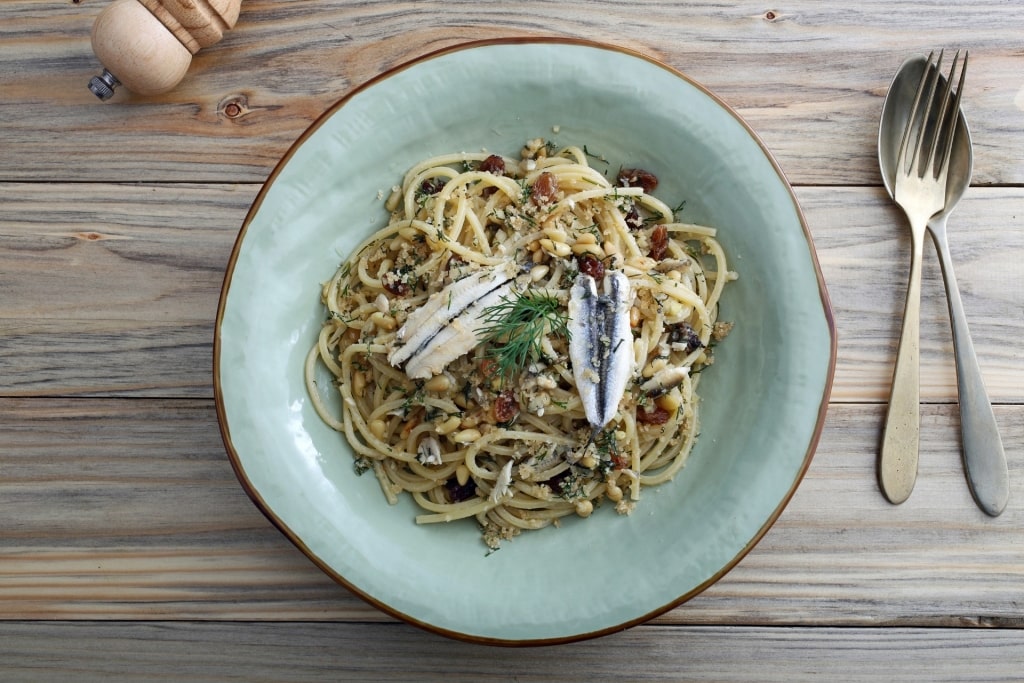
Pasta con le sarde
Pasta con le sarde is one of the most flavorsome pasta dishes in the Italian culinary pantheon.
As with all great Sicilian dishes, pasta con le sarde has a colorful origin story. Euphemius of Messina, a Byzantine commander from the ninth century, arrived on the island’s western shore thinking about lunch.
He ordered his cooks to forage up something from nearby, and the result was the precursor of this aromatic pasta dish.
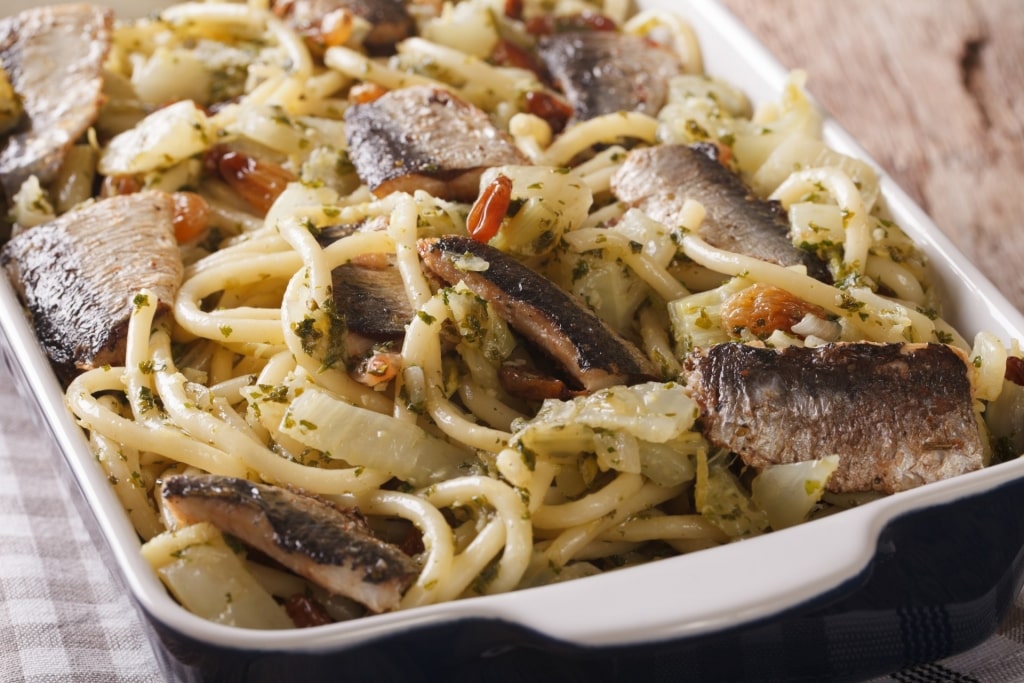
Pasta con le sarde
So what did the Byzantine military kitchen team put together? From the waters off Marsala they reeled in some sardines and anchovies and mixed these with a sauce comprising currants, pine nuts, saffron, breadcrumbs, wild fennel, and shallots.
Today, this is mixed with bucatini or spaghetti, and a squeeze of lemon, to complete a truly robust and unique bowlful.
Don’t return pasta con le sarde in a restaurant if it comes cold—it’s often served cool or at room temperature.
Large batches of the dish are made in the kitchen, and the process of cooling down is meant to intensify the flavors. Consider it your go-to pasta for the scorching Sicilian summer.
Sarde a Beccafico
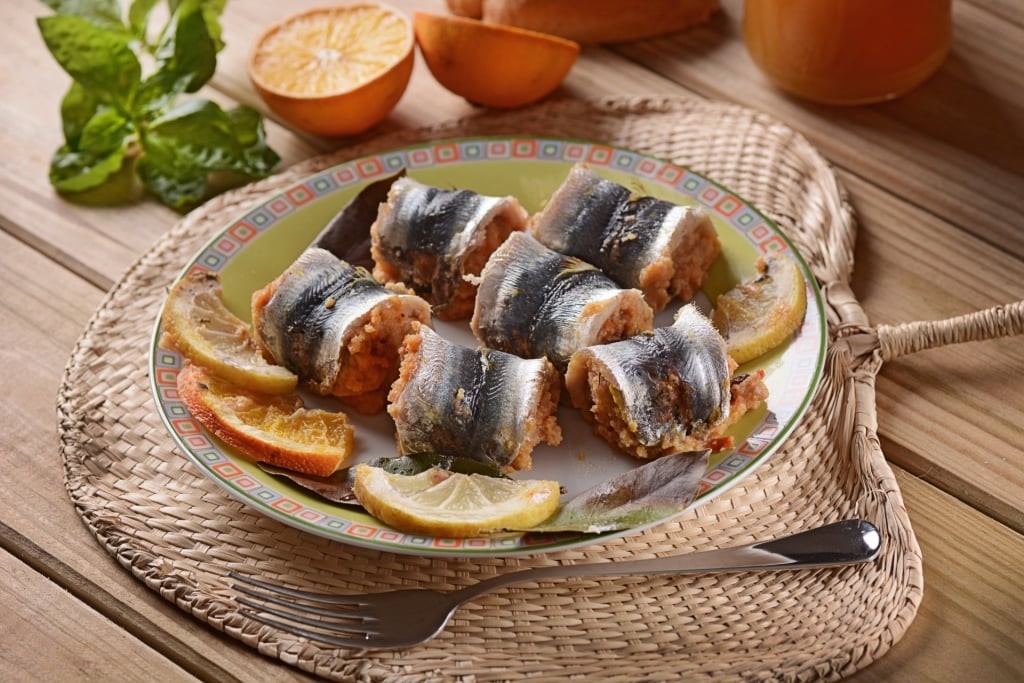
Sarde a Beccafico
The island of Sicily has, over the centuries, incorporated many of the most delicious elements of the Mediterranean’s marine biodiversity into its dazzlingly varied menu.
Sarde a Beccafico is a classic example of Sicilian seafood—a dish of butterflied sardines stuffed with a mixture of breadcrumbs, garlic, parsley, pine nuts, and currants, as well as anchovies, in case this dish was not fishy enough.
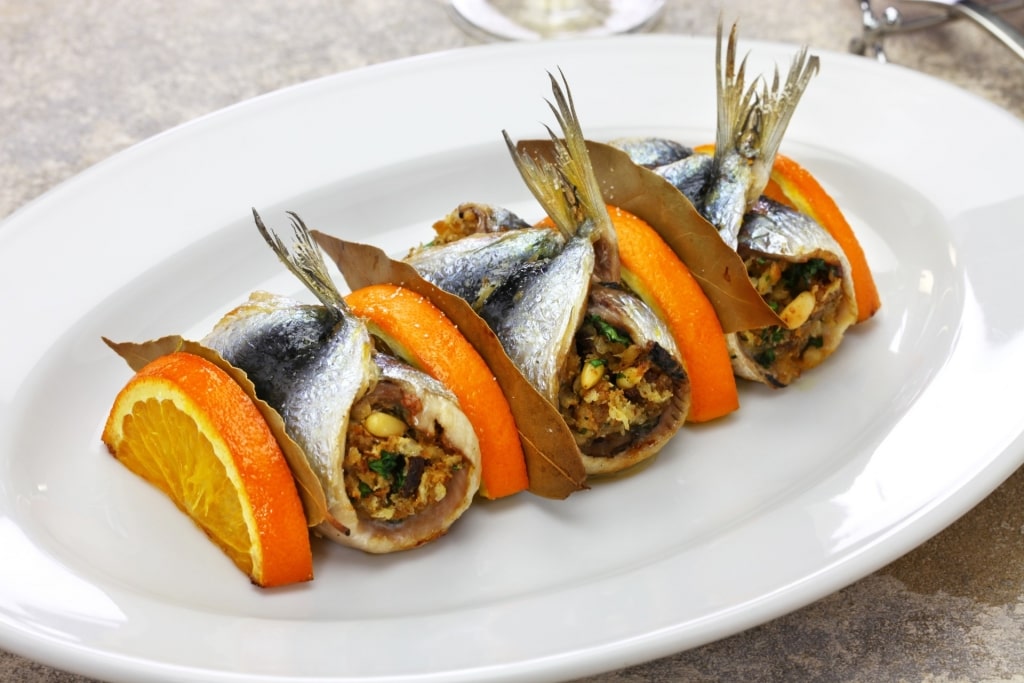
Sarde a Beccafico
Baked in the oven and finished with a squeeze of sharp lemon and a drizzle of extra virgin olive oil, this pungent silvery roll of sweet and umami flavors is highly addictive.
An example of Italy’s extensive cucina povera kitchen, sarde a beccafico was conceived in the 16th century as a way of using up leftover bread and fish.
Granita con Brioche
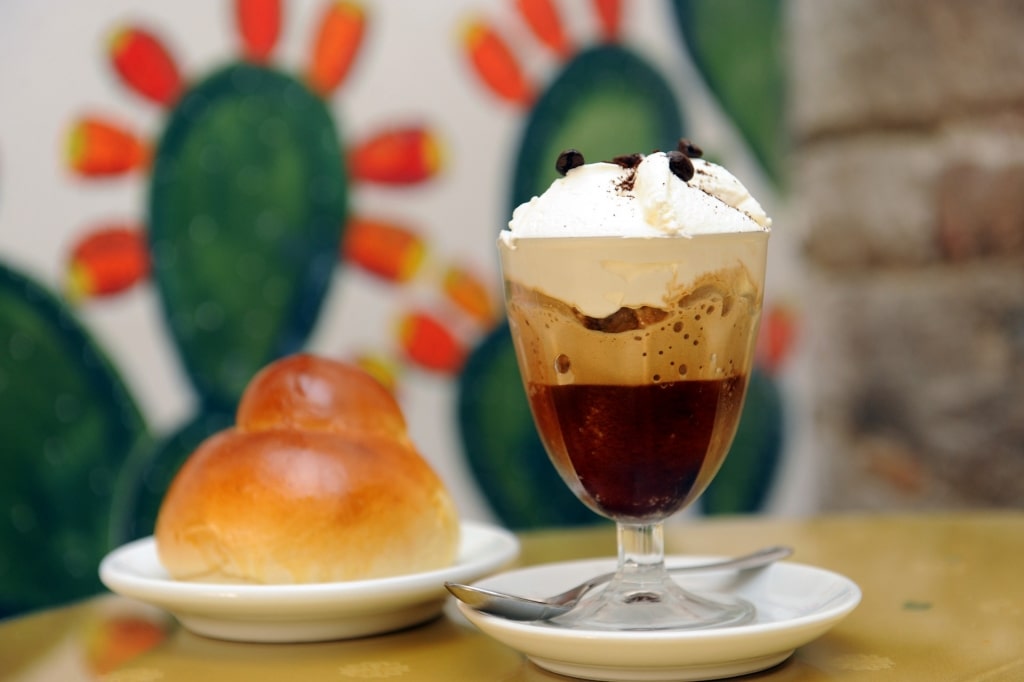
Granita con brioche
As with ice cream, granita con brioche was once the preserve of the upper classes who would eat this delicious slushy-style treat to cool off in Sicily’s warm summer months.
A favorite breakfast option in the island’s café culture—the coffee flavor perks you right up—the scoop of granita, which is a kind of granular sorbet, comes with a brioche bun that helps to make it more filling. Sweetened ricotta can be spread on the fluffy, sweet brioche before it’s dipped into the chilled granita.
Flavors available at granita stands vary with the seasons, but classic Sicilian varieties include lemon, almond, and peach. Ask for a swirl of cream for added decadence.
Spaghetti al Nero di Seppia
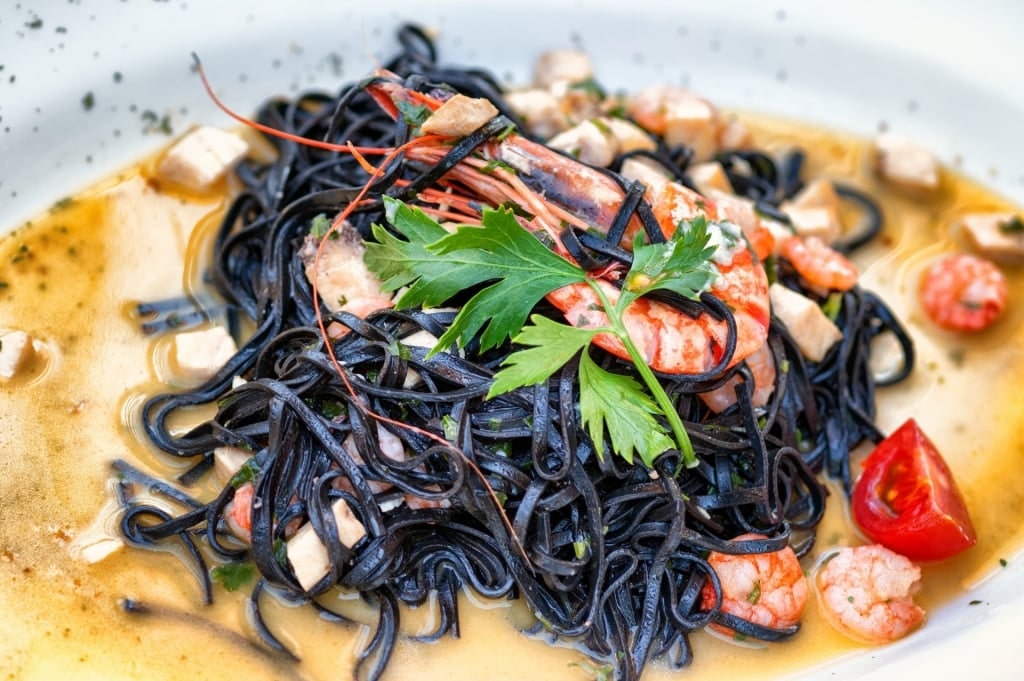
Spaghetti al nero di seppia
Always a visually striking bowlful, squid ink spaghetti is found throughout Italy and is especially prevalent in the promenade-facing restaurants of Calabria, Campania, and, of course, Sicily.
The technique for creating these jet-black noodles is to empty the contents of a cuttlefish’s ink sac, which then tones the pasta and imbues it with a delicious earthy flavor.
With roots that can be traced back to the medieval era, spaghetti al nero di seppia was once a peasant dish. The use of squid ink helped add nutrition and flavor to a meal without the need for costly ingredients.
Today, this delicacy typically comes with a spicy garlic and white wine sauce as well as morsels of melt-in-the-mouth squid.
Read: A Guide to Italian Wine & Food Pairings
Cassata
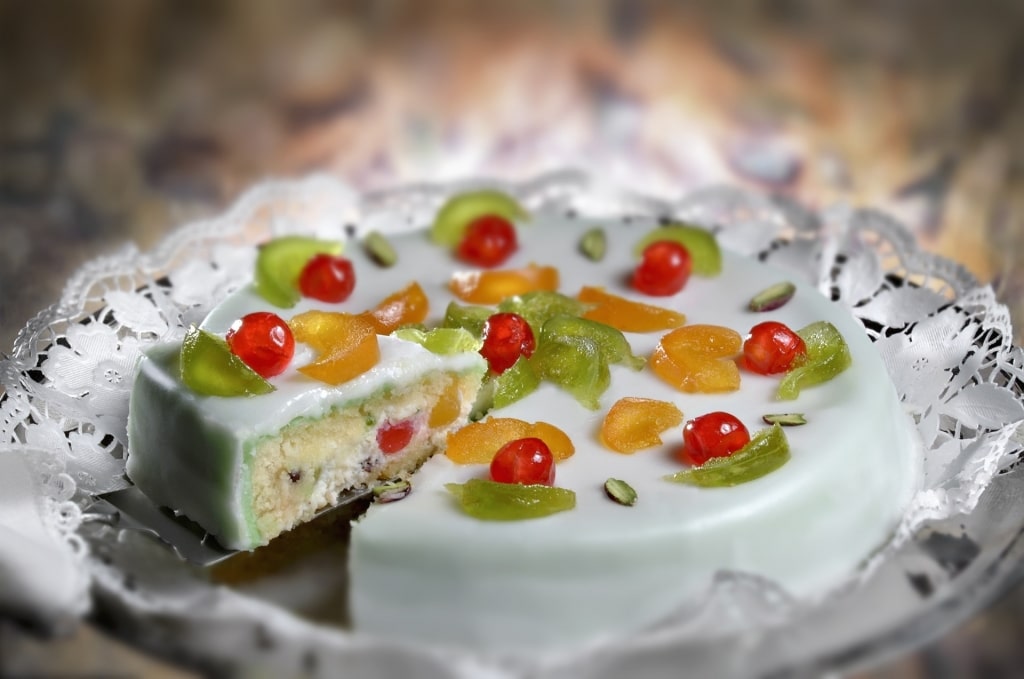
Cassata
A flamboyant icon of Sicilian food, cassata is a Marsala wine-soaked circular sponge cake layered with sweet ricotta cheese and marzipan before being topped by an eye-catching arrangement of candied fruit.
The cake has been around since medieval times, and probably longer. In the 18th century, the sharp tailoring of its marzipan jacket was added to endow cassata with a more elegant finish.
One of Palermo’s great outposts for traditional Sicilian treats is Pasticceria Cappello, where you can taste authentic cassata prior to losing your head and tasting everything else as well.
Busiate al Pesto Trapanese
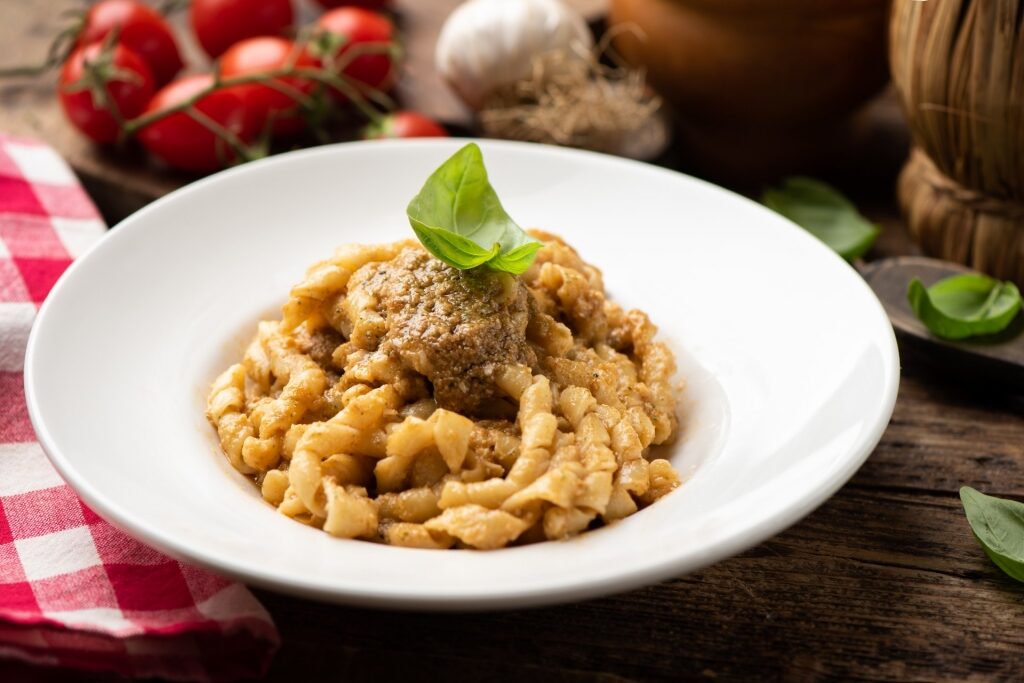
Busiate al pesto Trapanese
Hailing from the Trapani province in western Sicily, busiate al pesto Trapanese is a pasta dish that showcases the historic importance of this attractive port city.
For it was those trading giants and doyens of pesto, the Genovese, who, introducing the Trapanese to their basil-based pesto on stopovers at the important medieval port, gave the Sicilians the idea to make their own.
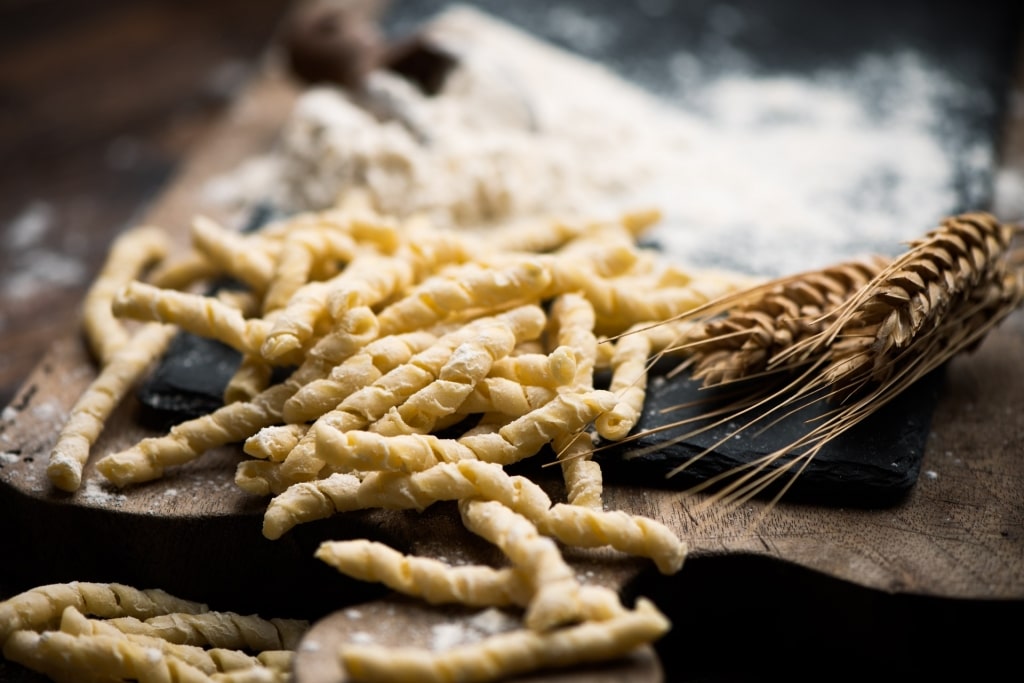
Busiate
Busiate al pesto Trapanese involves long spiral pasta known as “busiate”, topped with an aromatic pesto that’s made from basil, garlic, cherry tomatoes, pecorino cheese, and almonds.
This latter ingredient delivers a delicious nutty crunch that adds further complexity to this salty yet fresh bowl of pasta.
While much of the busiate that you’ll find in restaurants today is machine-made, this distinctive pasta is traditionally produced by wrapping the pliable durum wheat semolina around a stick, thus producing the spiral.
Cannoli
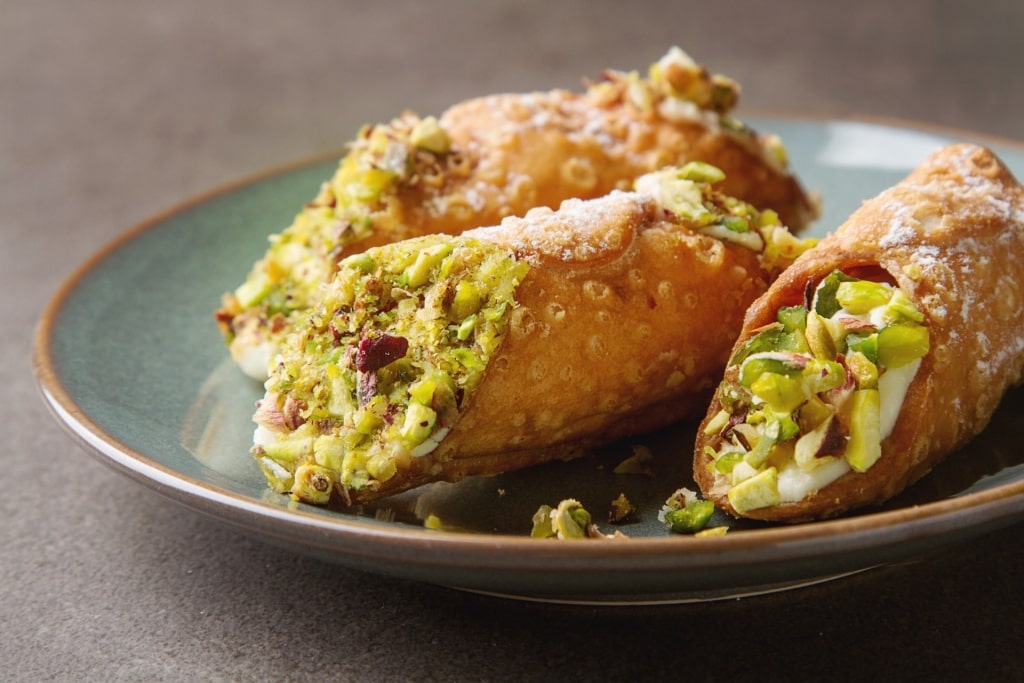
Cannoli
Perhaps the most instantly recognizable of Sicilian dishes—and one of the best desserts in the world—is the elegant curled pastry shell of cannoli, with its luscious, sweet ricotta filling.
With its significance during Christmas and the Feast of Saint Joseph, family recipes for cannoli traveled widely with immigrant families. While variations exist, the basic recipe involves deep-fried pastry shells filled with a mix of sweet ricotta made fragrant with orange zest or cinnamon, and filled out with candied fruit or chocolate chips.
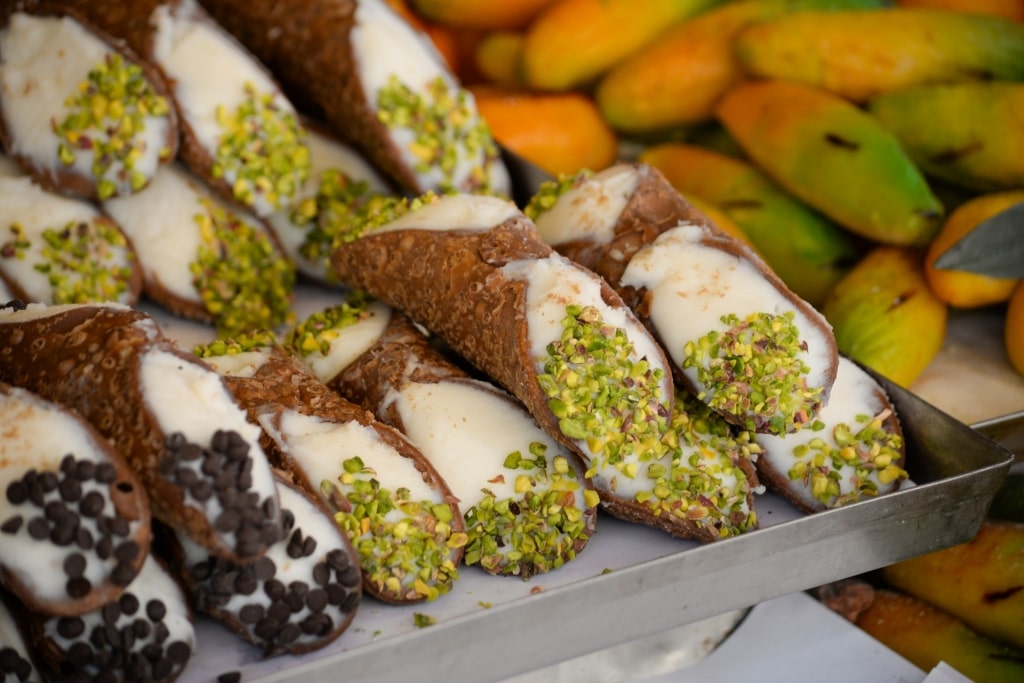
Cannoli
What is a truly decadent mouthful is made more civilized with a dainty dusting of powdered sugar.
You’ll find this treat all over Sicily—and the world—but perhaps one of the more special places to eat it is in Maria Grammatico’s traditional pasticceria in the striking hilltop town of Erice in western Sicily.
Read: Best Places to Visit in Sicily
Timballo di Anelletti
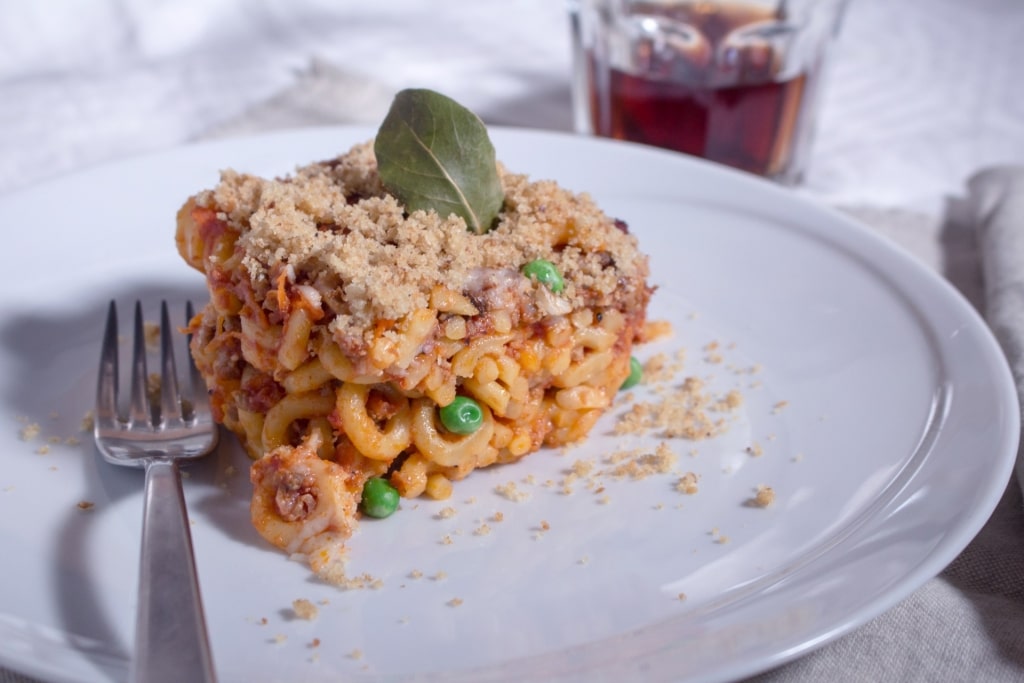
Timballo di anelletti
Also known as anelletti al forno or simply timballo, this icon of Sicilian food is Palermitan comfort food at its most delicious. Additionally, some versions, if you happen to be carrying it in your car at the time of having a flat tire, could also double as a spare.
This circular layered immensity mixes ringed anelletti pasta with a meat and tomato ragu, hard-boiled eggs, and cubes of mozzarella (the Sicilian version also includes eggplant).
This is baked before a second layer—comprising Parmigiano Reggiano, ricotta, and bread crumbs—is grilled to a crisp, golden skin.
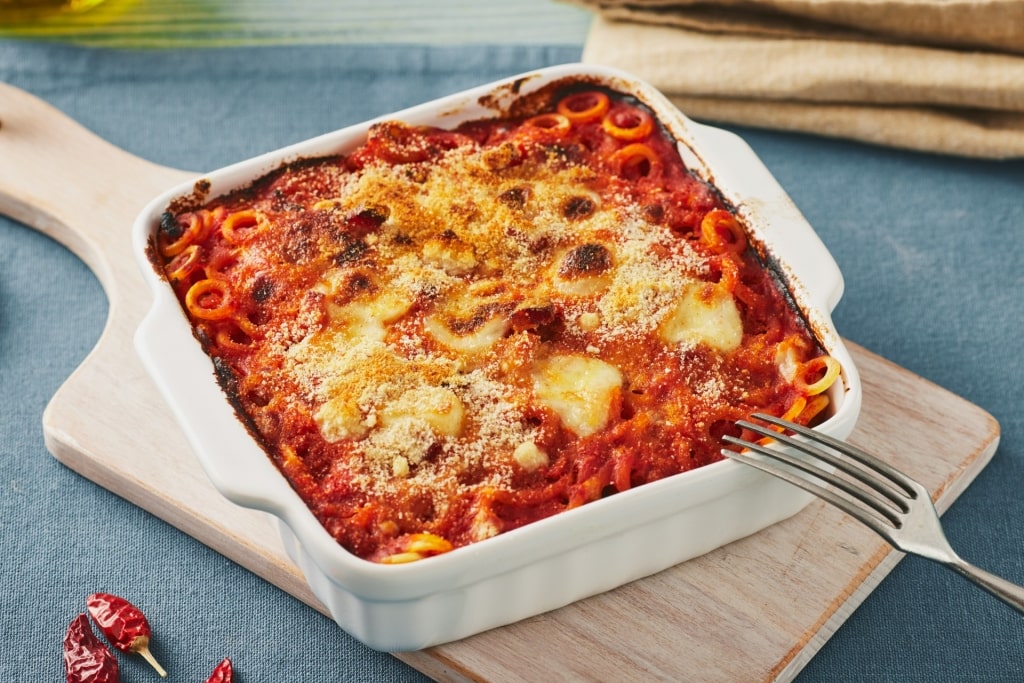
Timballo di anelletti
Creating a timballo is an arduous undertaking, so it’s typically homemade only for full-attendance Sunday lunches or significant events such as baptisms.
Fortunately, Trattoria Piccolo Napoli in Palermo understands that you can’t wait for your invitation to an Italian baptism and have a superb example to try on their menu.
It’s also possible to buy smaller versions in traditional focaccerias throughout Sicily, perfect for a takeaway lunch.
Panelle
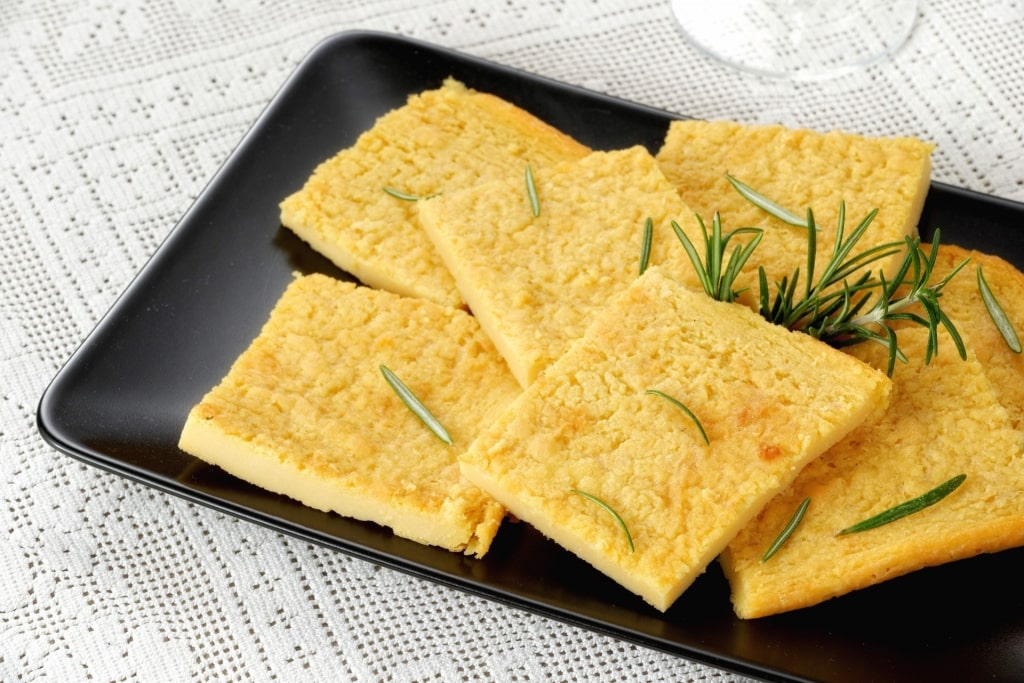
Panelle
The Sicilian take on a Mediterranean street food that you’ll find from Marseille to Messina, panelle is a chickpea fritter. It’s created with chickpea flour that’s often flavored with herbs such as parsley, before being cooked, cut into triangles or squares, dusted with flour, and crisped to gilded perfection in hot oil.
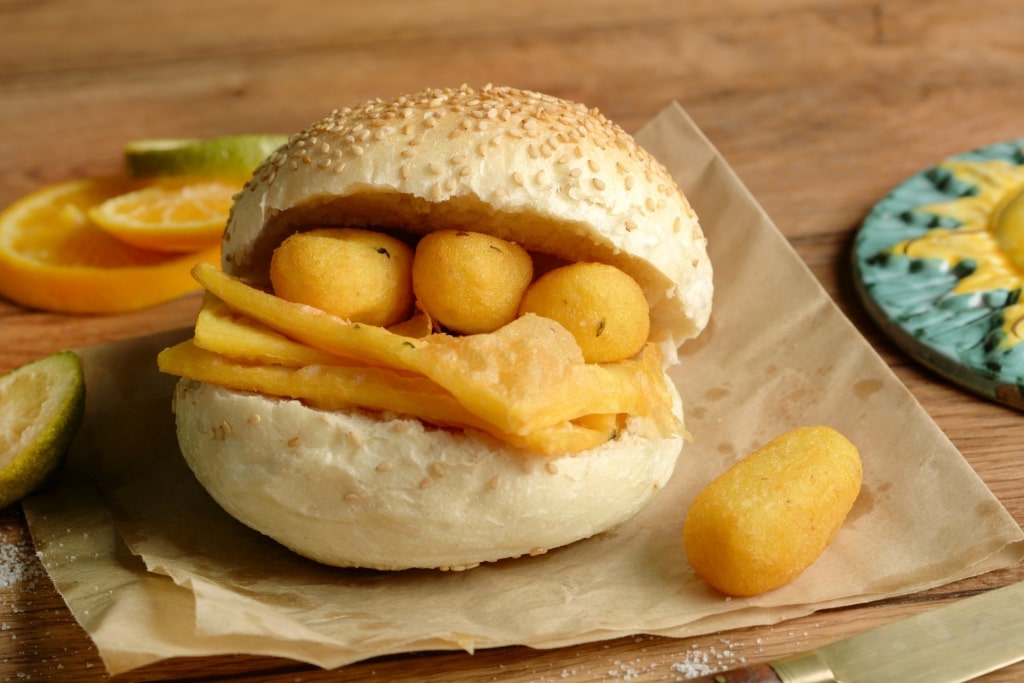
Panelle
These flat-fried sheets can be served on their own in a foil takeaway from a bakery, as a starter in a restaurant, or in a sandwich from a hole-in-the-wall, often with potato croquettes and a squeeze of lemon, a twist of pepper, and a scattering of fresh mint.
While they’re magnificent on their own, panelle hit new heights when included in a “pani ca meusa”. This iconic Palmeritan sandwich marries panelle with fried beef spleen before being topped with caciocavallo cheese and lemon juice.
Involtini di Pesce Spade
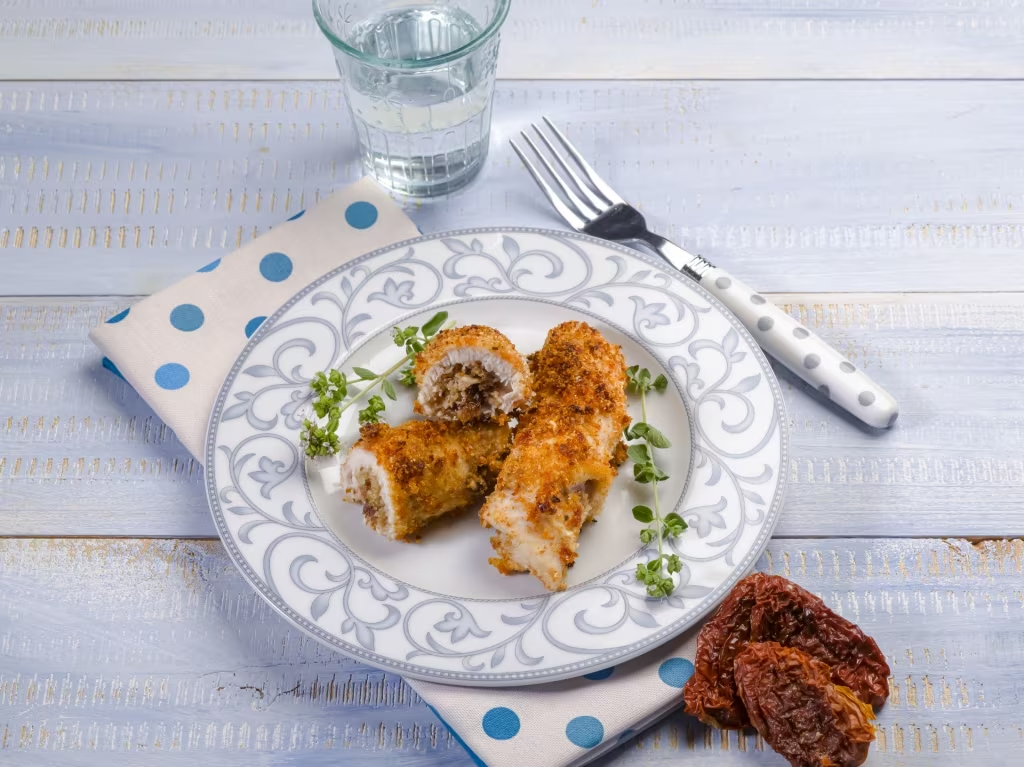
Involtini di pesce spade
Involtini di pesce spade is another rolled fish dish in the pantheon of great Sicilian seafood options. In this case, you have rolled slices of swordfish filled with a breadcrumb mix flavored with parsley and garlic.
Ever since the Phoenicians, swordfish has long been prized in the region as a luxury food item. In the Messina Strait, the tradition of hunting swordfish on feluccas (traditional fishing boats) during summer in Italy has continued for two millennia.
Delicious and delicate, this is a perfect plateful while dining on Sicily’s glorious coastline, with the turquoise waves lapping in the distance and a glass of chilled grillo in your hand.
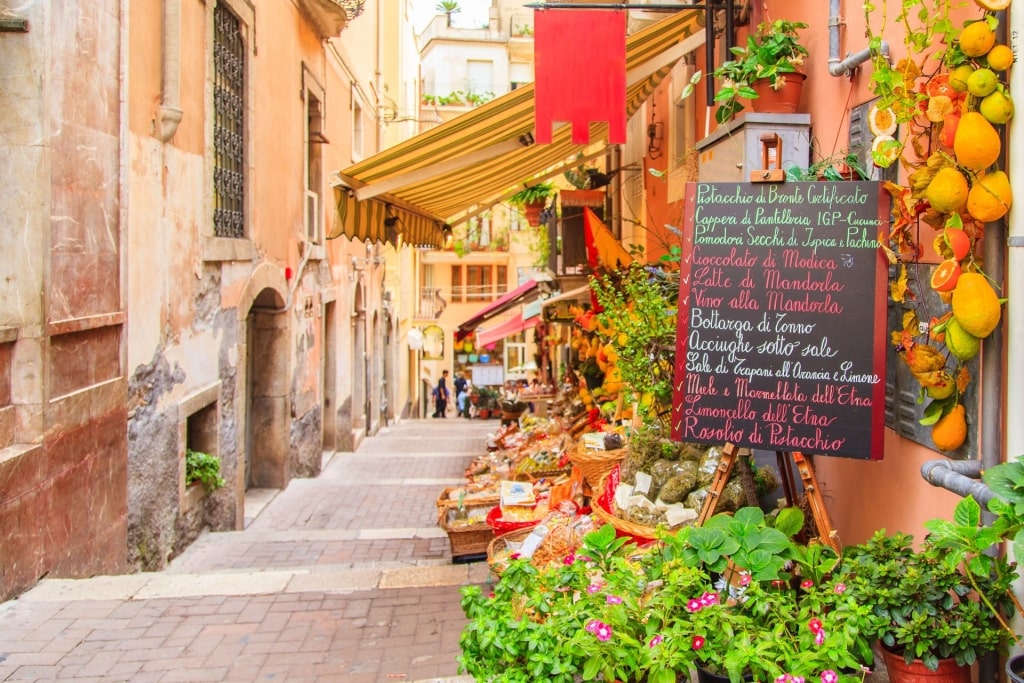
Taormina
Experience Sicilian food—as well as the island’s elegant architecture, stunning coastline, and impressive artistic heritage—on a cruise to Italy. Browse our cruises to Sicily and book a cruise vacation to Europe today.
